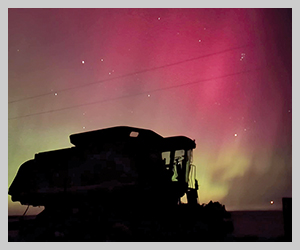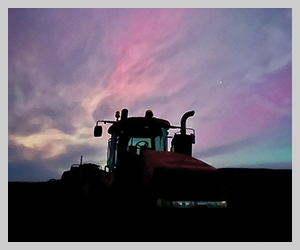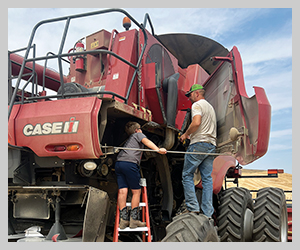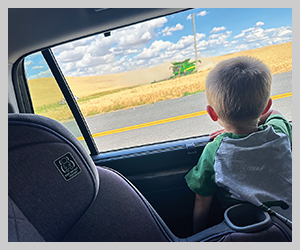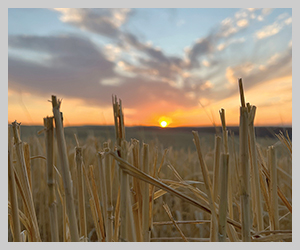Northcentral Washington settles down Early resident reminisces about the early days, Douglas County
2024January 2024
By Trista Crossley
Editor

In 1936, the state of Washington began a project to preserve the lore of its earliest pioneers. Elderly people receiving old age assistance through the State Department of Public Welfare were interviewed, and excerpts from those interviews were published in three volumes, the last one in 1938. “Told by the Pioneers. Reminiscences of Pioneer Life in Washington,” aimed to preserve, in the language of the pioneers or their children, the household tales of early days and to inspire in students the desire to unearth other stories to be preserved in the future. Here is an excerpt by Henry C. Godlove from Volume 3, pages 35-37, which talks about the settling of Douglas County.
The 80s were restless times in the middle west. There was still plenty of room there, but all our lives, we had been hearing tales of the far west, beyond the Rockies. I think many of us were tired of the flat country and the short grass of the prairies and plains.
Out there were mountains, lakes, forest. There were mines, rich farming lands, so many ways of making a fortune. In 1883, I was living in Pottawatomie County, Kan., where I was born, when a party of men were leaving for the Black Hills to mine.
I knew a man in Ellensburg, Washington Territory, and decided to visit him, traveling part of the way with the party bound for the Black Hills. When I reached The Dalles, Ore., I boarded the stage for Ellensburg.
It was in April, and the road over the Simcoe Hills was in bad shape. I walked most of the way, finally reaching my destination, where I filed on a homestead in what was soon to become Kittitas County. I didn’t prove up on this land, but crossed the Columbia in 1885 and filed on a timber tract east of Moses Coulee in Douglas County. My home was at Palisades, where I bought railroad land and raised stock. I had brought a few cattle over from Ellensburg, swimming them across the Columbia River. There was no ferry at the crossing, but Indians paddled us across in their canoes.
Douglas County was organized in 1883, and there was one settlement at Okanogan, the county seat. In locating this town, the founders omitted the most important detail — water. There was no water there, and no matter how deep they dug or bored, they never reached water. There was a good well on a ranch a few miles from there, and the ranchers coming there for water named the place, “Waterville.” It seemed the logical place for a town, and the man who owned the ranch, A. T. Green, released 40 acres to the government to be platted for a government townsite since the land had not been surveyed. That was quite a drawing card and drew the county seat away from Okanogan in 1886, leaving the town Okanogan “high and dry” to the winds of fate. Freighting was done from Spokane Falls, but for a long time, the settlers drove once or twice a year either to Ellensburg or to Ritzville for supplies.

In 1885, the year I came to Douglas County, I took a long trip on horseback through the Okanogan. A military road crossed Douglas County, and the soldiers had wintered at the mouth of Foster Creek in 1879-80. That country was not settled in 1885, and I just saw a few people. Since then, it has become a farming section. The little settlement of Bridgeport on the Columbia was afterwards financed by men of Bridgeport, Conn. There wasn’t a settler in the Methow Valley. The Indians were away on their summer pilgrimage, but their sweat houses remained, mute evidence of their belief in a ruling spirit.
I traveled up the Okanogan Valley as far as Lake Soyoos, where I saw Okanogan Smith’s ranch, but I didn’t stop there. Smith came there in 1858 and located on 600 acres of land. Later he bought 300 acres from Chief Tonasket. He set out an orchard, which became famous through the whole northwest. There were 1,200 apple trees, and he was the father of irrigation in Washington, teaching the Indians farming practices.
The old customs house was still standing, not far from the lake and near the boundary line.
Most of the cattle men of Douglas County were in the section which was cut off in 1909 to form Douglas County. I knew “Portugese Joe.” He had a ranch in the Crab Creek country and was probably the first white man there. Tony Richardson was there, also, and had 3,000 head of horses. The Hutchinson brothers, both of whom were nearly seven feet tall, had a ranch about where Neppel is located. Blythe had a hay ranch farther south, and McManiman had horses and cattle. The Urquhart boys were farther north. There was a stock ranch at McEutee Springs where Coulee City is now.
Editor’s note: Neppel was the original name of the town on Moses Lake. In 1938, it was renamed Moses Lake.
Where Ephrata stands was the big round-up camping grounds. The springs there were called “Indian Grave Springs” because of the number of Indian graves in the hills. The ground at the springs was an old meeting place for the various tribes. Frank Beasley located there for awhile, and the springs were afterwards known as the Beasley Springs. He moved on, and it was left for others who settled there to realize on the townsite, which was platted with the coming of the railroad.
Tom and Bill Eden ran sheep in that country at one time and were in the cattle business.
When the Great Northern Railway was building through to the coast, Dan Paul and T.S. Blythe, who had cattle in the Moses Lake country, had the contract for furnishing beef to the construction camps. As the camps moved west, they moved their cattle, swimming them across the Columbia River.
Throughout Douglas County, the bunch grass hills of yesterday have given place to the wheat ranches of today. The ranks of timber standing on Badger Mountain more than 50 years ago have been thinned to provide comfortable homes in country and town.
Great highways pass our doors. Trains thunder by, carrying our wheat to the four corners of the world. In development and progress, in the stability and integrity of its people, Douglas County ranks with the foremost counties in the state.




